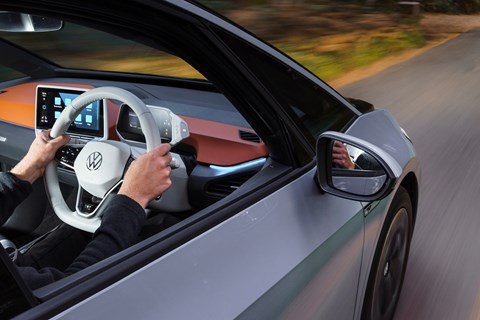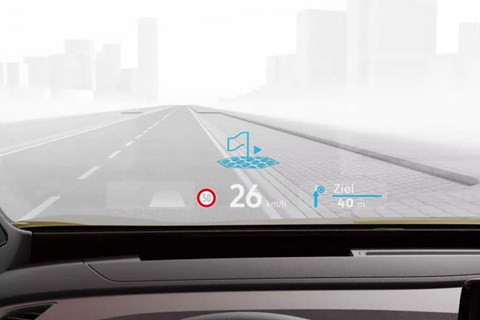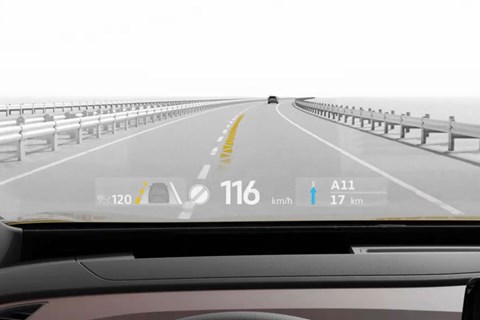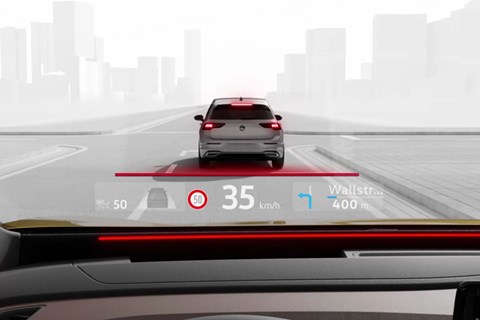► AR head-up display tech tested
► Tried out on a VW ID.3
► What if life were more like video games?
The physical world is blending with the virtual one. Augmented reality, arguably no more than a gimmick in the video game industry, is being applied in possibly its most usable set-up yet – aiding drivers on the move.
VW’s new ID.3 and ID.4 can be had with this technology, clunkily called an augmented-reality head-up display (AR-HUD), with those two new EVs being the cheapest way into the tech. While available as part of an option pack on either of these models in Europe, the system is built into certain trims as standard in the UK. In the case of the ID.3, that’s Tech and above, and for the ID.4 you need top-spec Max. Audi’s Q4 e-Tron and the Cupra Born (which is the same as the ID.3 underneath) will both use AR-HUD when they go on sale later in 2021. Mercedes has it on the latest S-Class, too, as does Hyundai on the new Ioniq 5.
If you’ve experienced a non-AR head-up display, it will seem like an evolved version of that. So instead of a small image being beamed on to the windscreen to show essential information, an AR-HUD’s virtual display area is much larger, with a ‘picture generation unit’ built into the panel on top of the dashboard, and a separate AR creator built into the car’s central computers.
We tested it on an ID.3. The information you see appears to be 10 metres ahead of you, and comes in two forms. The ‘near-range’ display works exactly like a normal HUD, giving you your speed and driving data at a glance. It’s the ‘far-range’ window that’s the clever bit.

It’s clever because it works with the car’s navigation and driver-assistance systems. If you set a navigation route, for example, then as you approach a junction a large virtual blue arrow will appear in front of you, zooming closer towards you as you drive up to and through the junction. When you arrive, a glowing blue flag marks your finishing point.
Also, if you start to stray from your lane, the lane-keep assistance system talks to the AR-HUD to present a glowing orange marker to highlight your error, accompanied by vibrations from the steering wheel.
The cameras used for adaptive cruise and collision avoidance also contribute, by helping you get a clear idea of your positioning in relation to other road users. For instance, a red bar will flash if the sytem thinks you’re about to crash into the vehicle in front. Thankfully, we didn’t have to test that last detail.
A gamer’s view: how it works
Capture the flag
Once a nav route is set, blue arrows guide the way. At the end, a blue flag marks your finish line.

Avoiding side quests
An orange line glows to project the path of your deviation from the main story quest. Sorry, the correct lane…

Non-playable character interface
Cruise and collision assist mark where other players are. Oops, other drivers.

VW AR-HUD: does it work?
Yes. It’s all seamless, becoming a useful part of the driving technology you’d naturally use on every trip. You can switch it off in a sub-menu if it’s not for you, but it’s far less intrusive than you may think, and injects a little wow factor.
Read more CAR Tech news here